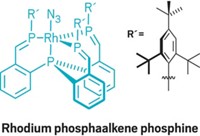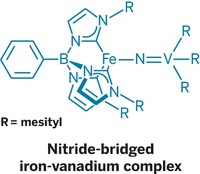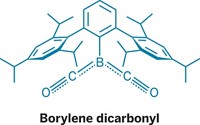Advertisement
Grab your lab coat. Let's get started
Welcome!
Welcome!
Create an account below to get 6 C&EN articles per month, receive newsletters and more - all free.
It seems this is your first time logging in online. Please enter the following information to continue.
As an ACS member you automatically get access to this site. All we need is few more details to create your reading experience.
Not you? Sign in with a different account.
Not you? Sign in with a different account.
ERROR 1
ERROR 1
ERROR 2
ERROR 2
ERROR 2
ERROR 2
ERROR 2
Password and Confirm password must match.
If you have an ACS member number, please enter it here so we can link this account to your membership. (optional)
ERROR 2
ACS values your privacy. By submitting your information, you are gaining access to C&EN and subscribing to our weekly newsletter. We use the information you provide to make your reading experience better, and we will never sell your data to third party members.
ACS Meeting News
P₂ acts like acetylene when it binds a single metal center
Elusive crystal structure shows diphosphorus makes triangular bond with Fe complex
by Leigh Krietsch Boerner
March 29, 2022

Since phosphorus is directly downstairs from nitrogen on the periodic table, chemists often consider diphosphorus to be a heavier analogue of dinitrogen. But when it binds in metal clusters, P2 tends to act more like carbon-based acetylene. Researchers now have an explanation for why this happens. Joshua Figueroa and team at the University of California San Diego, the University of Rochester, and the Ohio State University have captured the crystal structure (shown) of a single iron atom bound to a P2 ligand. The structure reveals that the ligand binds the metal from its side, as acetylene does, forming a triangle among the three atoms. This contrasts with just one of the two atoms binding the metal from the end, as N2 would do (Science, 2022 DOI: 10.1126/science.abn7100). By studying this crystal structure, the team found that P2 is electronically similar to double-bonded C complexes in how it binds to a single iron atom. N2’s end-on binding means that a lone electron pair from only one of the two N atoms associates with the metal. Through orbital analysis of the crystal structure, the team showed that the pi bonding electrons of P2 interact with the metal center instead, so that both P atoms participate in bonding with Fe. Figueroa presented this work March 22 in a session of the Inorganic Chemistry Division at ACS Spring 2022, a meeting of the American Chemical Society.





Join the conversation
Contact the reporter
Submit a Letter to the Editor for publication
Engage with us on Twitter